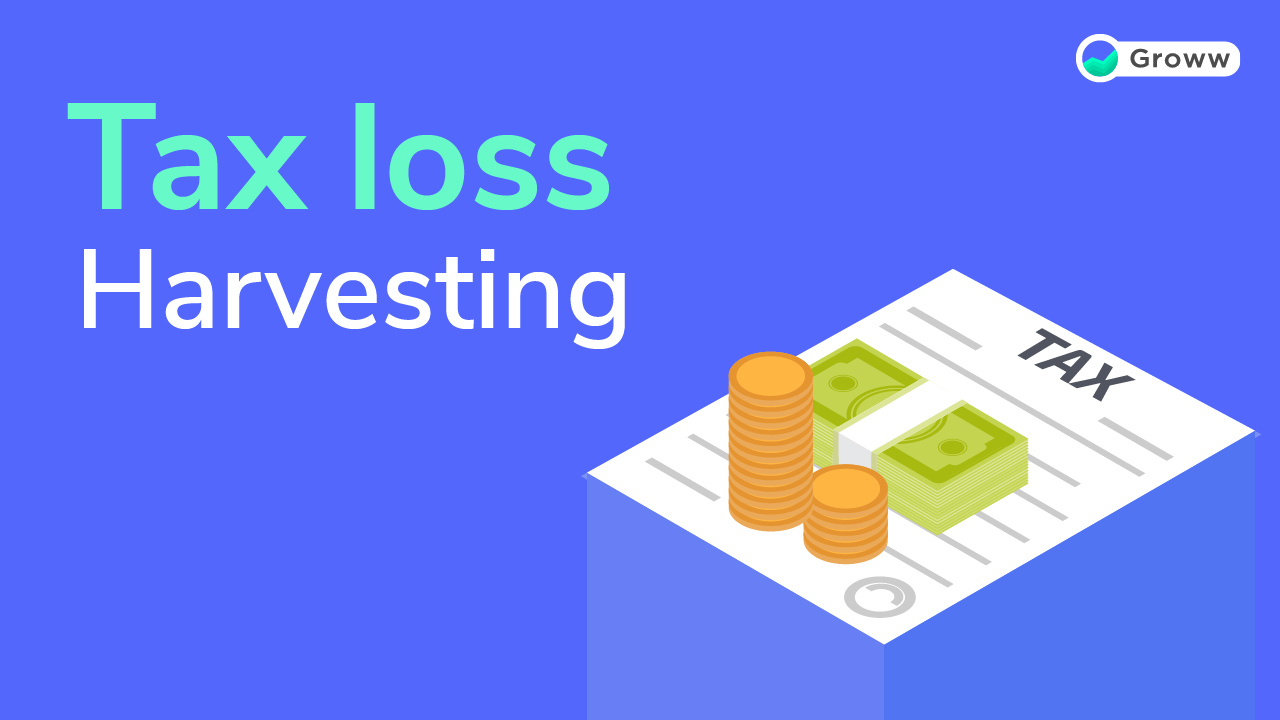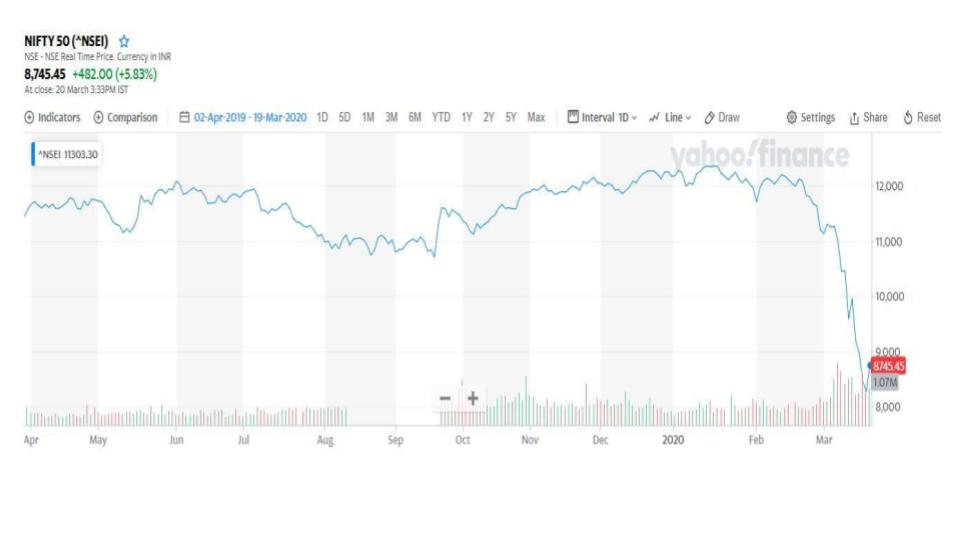Tax Loss Harvesting – Everything You Should Know

The markets go into a nosedive often, and many investors get concerned about the value of certain assets in their portfolios.
What if I told you there was a way to use these assets to increase the overall post-tax returns on your portfolio?
Yes, you read that right!
Tax Loss Harvesting is a way to use the assets from your portfolio that have lost value to increase the post-tax returns of the other well-performing assets.
Today, let’s look at tax-loss harvesting and try to understand how it works. Read on!
What is Tax Loss Harvesting?
When you invest in equity-oriented mutual funds, you either make capital gains or losses. These are defined as long-term and short-term based on the duration for which you hold the units of the fund.
The Income Tax Department allows investors to set off capital losses against capital gains to reduce tax liability. This means that in a financial year, if you have made short-term capital gains of Rs.50000 and short-term capital losses of Rs.10000, you need to pay tax on the net gain of Rs 40000 (50k – 40k) only.
In Tax Loss Harvesting, you sell those stocks and equity fund units with little or no chance of recovering from their current levels at a loss.
This helps in reducing the tax liability on capital gains. While most investors try harvesting their capital losses at the end of the financial year, you can use it regularly to maintain your annual capital gains at a low level.
How Does Tax Loss Harvesting Work?
To understand how tax-loss harvesting works, let’s use an example:
Saurabh has an investment portfolio spread across stocks, equity funds, debt funds, etc. At the end of the financial year, Saurabh’s portfolio performed as follows:
- Short-Term Capital Gains = Rs.80,000
- Long-Term Capital Gains = Rs.150,000
Hence, Saurabh’s tax liability is as follows:
STCG Tax = 80000 x 15% = Rs. 12000
LTCG Tax = (150000 – 100000) x 10% = Rs. 5000
Total tax liability = 12000 + 5000 = Rs. 17,000
However, Saurabh notices that certain stocks in his portfolio have reached low levels with minimal chances of recovery. He talks to an investment advisor who recommends using tax-loss harvesting. He sells those stocks and books a short-term capital loss of Rs. 30,000. Then, he uses the amount received to invest in more-promising stocks or equity funds. Hence, his tax liability becomes:
STCG Tax = (80000 – 30000) x 15% = Rs. 7500
LTCG Tax = Rs. 5000
Total tax liability = 7500 + 5000 = Rs. 12,500
Hence, he manages to save Rs.3500 in tax. Also, since he has invested the sales proceeds in another stock/mutual fund, there is a chance to recover the losses if the stock/fund performs well. This helps him maintain the asset allocation of the portfolio.
An Example - Coronavirus-led Market Crash & Tax Loss Harvesting
March 2020 was a bad month for equity investors, with markets in a literal nosedive. Although December 2019 and January 2020 were good months for the markets, the fear of the economic impact of Covid-19 sent markets into a frenzy in February and March this year.
Here is a quick look at how the Nifty 50 Index performed over the financial year 2019-20:
Source: Yahoo Finance
Suppose you were invested in the markets during the financial year and realized some capital gains. In that case, you can use the current market crash to book some capital losses and reduce your tax liability by implementing tax loss harvesting.
Deducting Business Expenses
When you declare a business income, the tax rules allow you to show all expenses incurred to earn that income as costs and deduct them from your taxable income.
Also, if you book a loss, you can carry forward these expenses as losses. Here are some expenses that can be included as business expenses:
- Trading-related charges – brokerage, exchange-levied charges, etc.
- Internet costs (if you place online orders)
- Phone bill (if you call your broker for trades)
- Depreciation of your computer or any other electronic used for trading
- Rent paid if you use a space to execute the trades
- Salary or consultation fees paid to someone to help you trade
- Costs associated with advisory services
- Costs for books or magazine subscriptions to keep you informed, etc.
1. Are BTST Trades Speculative or Non-speculative?
One of the fundamental ways of defining a speculative transaction in equity is determining if there is a delivery of shares associated with the trade.
In intraday trades, there is no delivery, and hence they are considered to be speculative. However, the tax rules are a bit grey in Buy Today Sell Tomorrow (BTST) trades or Sell Today Buy Tomorrow (STBT) trades.
Since in these trades, delivery is the net outcome despite the trader taking a short-term delivery risk; most people classify them as non-speculative business transactions.
2. Do I need to pay Advance Tax on intraday trades?
According to Income Tax laws, Advance Tax is mandatory for business income. This tax has to be paid as follows:
- 15% by June 15
- 45% by September 15
- 75% by December 15
- 100% by March 15
Tax is paid on income. So, what are these percentages? 15% of what?
This is the percentage of the tax that you are likely to pay in the financial year. So, you must estimate your profits in the FY, calculate tax, and pay Advance tax accordingly. However, when it comes to intraday trading, the problem is estimating how the rest of the year will be.
While this might seem difficult, paying advance tax on the said dates is mandatory. Most traders follow a straightforward method. They calculate their gains on June 15th, September 15th, and December 15th and pay taxes on them. At the end of the year, if they have paid more tax, they claim a refund. This way, they ensure that they comply with the tax rules and avoid paying a penalty of 12% annualized for the period for which the advance tax was not paid.
3. Use the Right ITR Form
Various Income Tax Return (ITR) Forms are available to suit different types of taxpayers. We recommend employing the services of a tax professional. However, if you want to file returns yourself, ensure that you choose the right ITR Form.
The options available for individuals are as follows:
- ITR 1
This is the most common type of ITR form used by individuals. It is for people with income from salary, rent from one house, and interest. However, this form is not applicable if you have capital gains or business income.
- ITR 2
This is used by individuals and HUFs (non-business) to file returns for income from salary, rent from one house, interest, and/or capital gains. Hence, this is for people who opt for investment as a classification of their equity trades.
- ITR 3 (erstwhile ITR 4)
This is used by individuals and HUFs (non-business) to file returns for income from salary, rent from one house, interest, capital gains, and/or business income.
Hence, this is the ITR form that intraday traders can use. This form also allows you to file returns if you trade, invest in shares, and have capital gains and business income.
- ITR 4 (erstwhile ITR 4S)
This is similar to ITR 3 but can only be used if you use Sections 44AD and 44AE to compute business income. Remember, you cannot use this form to declare capital gains or carry forward losses.
Some Tips Before You Implement Tax Loss Harvesting.
- Tax-loss harvesting means selling some assets at a loss to reduce tax liability. There is no way to guarantee that you will recover those losses.
- You can set off long-term capital losses against long-term capital gains only. On the other hand, short-term capital losses can be set off against both LTCG and STCG.
- If you are planning to implement tax-loss harvesting yourself, then ensure that you calculate your tax liability carefully before deciding to sell your investments at a loss.
- While investing the redemption proceeds of the loss-making trade, ensure you don’t take excessive risks to cover the losses. Keep your portfolio’s risk-return profile in mind.
- It's not wise to use tax-loss harvesting as an investment strategy. This is beneficial for tax-saving purposes alone.
Summing Up
If every coin has two sides, the only advantage of the current market crash is the opportunity to reduce tax liability using tax-loss harvesting.
We hope this guide helped you understand how to harvest your capital losses and save taxes. If you have any further questions, drop us a line, and we will gladly assist.
Happy Investing!
Disclaimer: This blog is solely for educational purposes. The securities/investments quoted here are not recommendatory.
